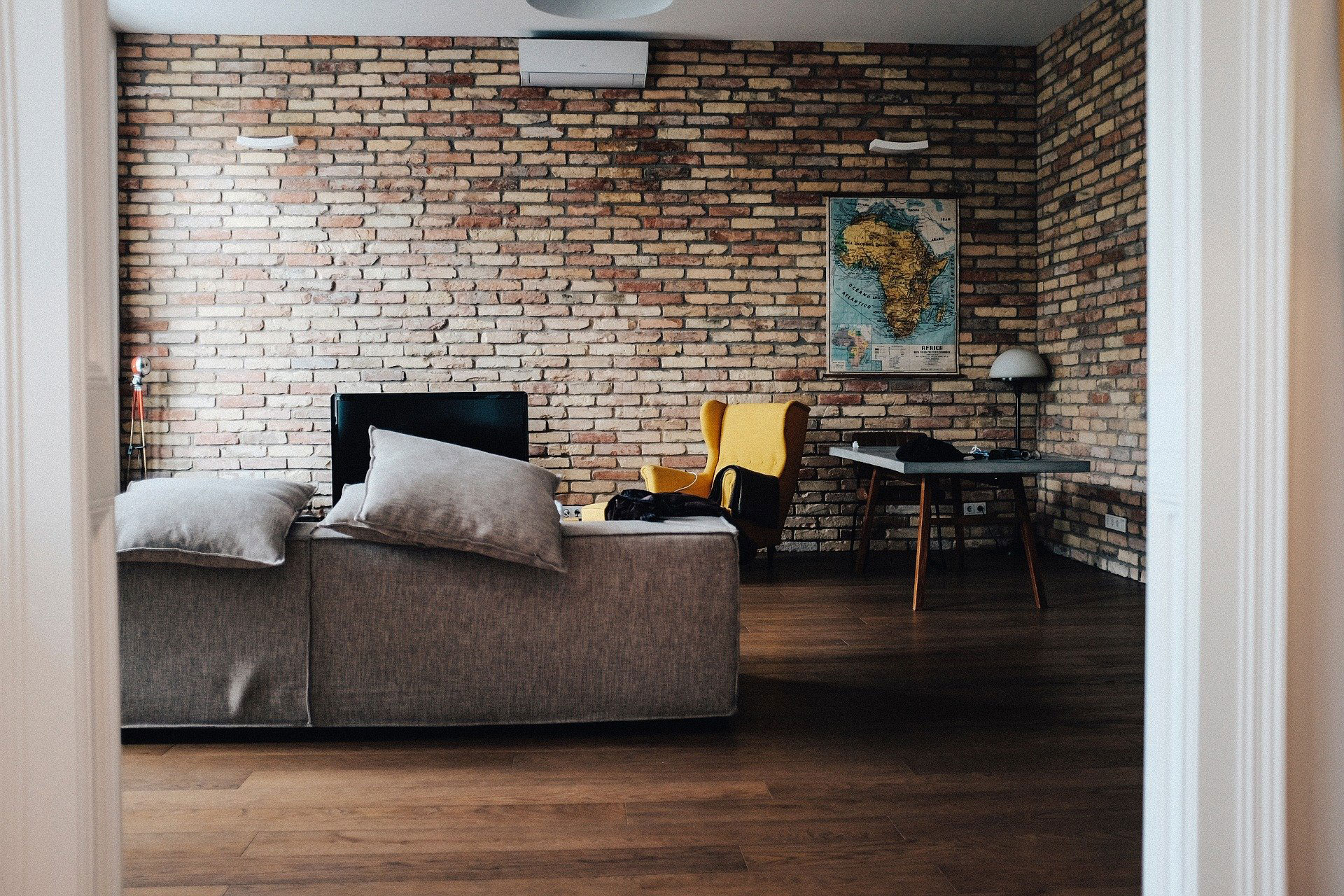Choosing the right aircon capacity for your room size will have a big effect on your comfort and your electricity bill. If you choose an AC unit that is too small, it won’t cool your room quickly and efficiently. However, if it is too big, then it will cool your room too quickly without removing the humidity. This makes your room uncomfortably cold and clammy.
When referring to an air conditioner’s size, we are not talking about its physical dimensions. Instead, we are referring to its cooling capacity. In this article, I will give you a quick method to help you find the proper aircon capacity for your room size.
How an aircon’s capacity is measured
An air conditioner’s cooling capacity is measured in either kilojoules/hour (kJ/hr) or British Thermal Units (BTU). This is used to measure the amount of heat your aircon can remove from the air per hour of use. In the Philippines, we mostly use kJ/hr when referring to an aircon’s cooling capacity so you should use this in your calculations.
Aside from kJ/hr and BTU, an aircon’s capacity can also be measured in horsepower (HP). However, HP is used to measure the motor’s power, not the aircon’s cooling capacity. That is to say. different models with the same horsepower rating may differ in their cooling capacity. Therefore it is much more accurate to measure models by kilojoules per hour than by horsepower rating when calculating the capacity of your aircon.
The horsepower rating is not useless though, as you can use it to filter the models that you will be considering. Keep in mind that 1.0HP = 9,495 kJ/hr.
Aircon capacity to room size guide
An air conditioner’s recommended floor area is measured in square meters (sqm or m2). If you have your house’s floor plan, this will be easy. Otherwise, grab a tape measure and measure the room’s length and width and multiply both numbers to get the room’s size in square meters.
To get a rough calculation, multiply your room size by 500. So if your room is 10 sqm. in size, you need an aircon with 5,000 kJ/hr of cooling capacity – which most 0.5 HP window type air conditioners have.
Below is a cheat sheet of the base capacity per room size. To get a more accurate calculation, there are other factors that you need to account for, which we will discuss in the next section.
[wpdatatable id=1]
Other factors to include
Knowing your room’s size will give you a nice starting point to estimate the size of your aircon. However, to get a more accurate estimation, you should take into account your room’s heat load. The heat load (or heat gain) refers to the sum of the heat (expressed in kJ/hr) emitted by heat sources inside a room.
The room size is one factor. Other factors include the number of occupants, windows, and appliances inside the room. So, take the baseline cooling capacity based on its size, then adjust your calculations depending on the following circumstances:
1. Shade
The amount of sunlight in a room is one of the biggest factors that determine its heat load. If your room is subjected to direct sunlight, you should add 10% to the room’s cooling requirement; if it is shaded, then deduct 10%. It’s a big reason why you should think about installing proper shades in your room to save energy.
2. Number of occupants
Humans also emit body heat. Hence it needs to be accounted for to get an accurate measurement of the room’s heat load.
If the room is used by two people, leave the calculation as is. However, if it is used by more than two people, then add 633 kJ/hr for each additional person.
3. Lighting and other sources of heat
Light bulbs are also sources of heat when they are in use. To get a simple calculation of their heat loads, look for their rated wattage and use the following calculation for each lamp:
((Rated Wattage * Hours of Use) ÷ 1,000) * 3,600
The calculation is divided by 1,000 to convert the watts per hour into kilowatts per hour. The product is then multiplied by 3,600 to convert the kilowatts per hour to kilojoules per hour. Add all of the heat loads of each appliance then add the sum to your baseline cooling capacity.
Another thing to add, if you have a stove in your room (especially for those living in studio type rooms) add 4,220 kJ/hr to the calculation.
Sample calculation
Here is a sample heat load calculation to see the formula in action:
Given: your room is 20 square meters in size with a lot of windows that let the sunlight in and with 3 constant occupants. The room is illuminated by one LED ring light (15W). Calculate the required cooling capacity and get the recommended model size in HP.
How to calculate: first up, you have to calculate the heat load of the LED ring light. Let’s assume that the light is turned on for only 8 hours.
[wpdatatable id=13]
After that, you should get the baseline capacity for the room size and add 10% to the baseline because the room is sunny (represented here as “* 1.10” to simplify the calculation). Next, add the other factors like the heat load from the additional occupant and the lighting. Your calculation should look like this:
Calculation:
Step 1: (Room Size x 500) * 1.10 + additional occupant + lighting
Step 2: (20 x 500) * 1.10 + 633
Step 3: 10,000 * 1.10 + 633
Step 4: 11,000 + 633
Required cooling capacity: 11,633 kJ/h
Recommended model size: 1.5 HP
Conclusion
Bigger is not always better. If the aircon is too large, it will use up more energy, take away less humidity, and will have higher wear and tear compared to the proper-sized models. Smaller is not ideal as well. A small air conditioner will struggle to cool bigger rooms, which will use up more energy, and will strain your unit’s motor.
With this method of calculation, you can gauge accurately where the sweet spot is. If you’re not confident with finding this Goldilocks zone on your own, don’t hesitate to call a professional! Also, if you’re still not sure what kind of air conditioner to buy, you should read this aircon buying guide to get you started.
References
- https://www.doe.gov.ph/sites/default/files/pdf/consumer_connect/properly_sized_room_air_conditioners.pdf
- https://www.doe.gov.ph/sites/default/files/pdf/consumer_connect/2016-consumer_guide_for_rac.pdf
- https://www.arema.com.au/hp_fact_sheet.pdf
- https://theengineeringmindset.com/cooling-load-calculation-cold-room/

Miguel Mores worked for 5 years as a member of the product management team for a home appliance company in the Philippines. He started 101appliance to answer the most common customer questions that he has encountered during his time in the industry. He now works in the digital marketing field and manages a small online bookstore on the side.



Identifying the proper aircon capacity for your room help you to choose the bet air conditioner to provide better cooling for you room. The information that you have shared it with us will help us in doing that better. Thank you for sharing it with us.
This is a great article, a rare information-packed and region-based, indeed! Most articles I’ve read were less details and mostly paraphrased from just one source. Nowadays, you can really tell if an author is just basing purely on concepts or with fact combined with priceless experience.
I came across this site after googling “how to calculate hp for aircon” and since it only ranked 3rd, I’ve read others’ articles first. But this is the only article which considers more parameters in choosing the right ACU, especially here in the Philippines where I am living.
But, I still have one more parameter in mind that’s part of room size that most articles I’ve read haven’t fully accounted for while the rest are totally silent about it. This is the height of the room.
I’m really wondering which room will be easier to cool, a 20sqm room with a standard height of 2.7m or about 9feet or a room with the same area but 3.7m or about 12 feet height?
I understand that hot air rises and cold air sinks that’s why most well-ventilated rooms have 12ft or higher floor to ceiling ratio. But what is the total effect height with ACUs?
I hope to read “Mores” from you, Miguel! Always keep safe and thanks for this well-written article. 🙂
Thank you for your kind words! We’ll try to get a definite answer for you regarding your ceiling height question.
Great information here. An AC website calculator suggested to get a higher HP but the additional cost is too much for us. Good thing i found your site. I think the lower HP would be enough for our room. Thank you.
Thank you so much for this highly informative article. Excellently presented for us ordinary consumers! More power to you!
Good day Sir,
Please, I need expert advice on how to solve my AC concern. A 1.0hp split type AC is installed in a 16sqm room. I’m not satisfied with its cooling effect even though there are only 2 people in the room. So, I had it serviced but still the same and the technician said I need a unit with a higher hp.
My question is should we replace it with a 2.0hp split type AC or just add additional 1.0hp AC? Cost wise it is expensive to remove the old (1.0hp) and install a new one (2.0hp) compared to just adding another one (1.0hp). Thus, the room will now have 2 x 1.0hp AC?